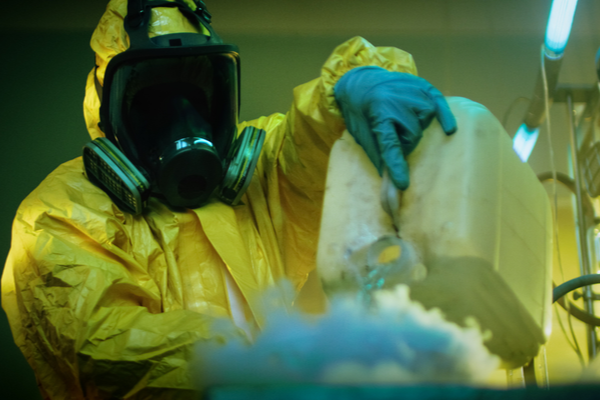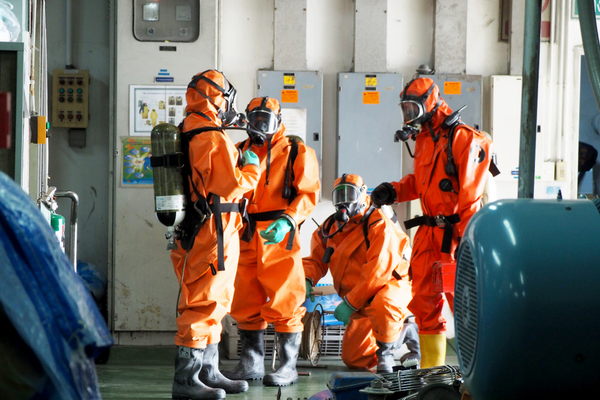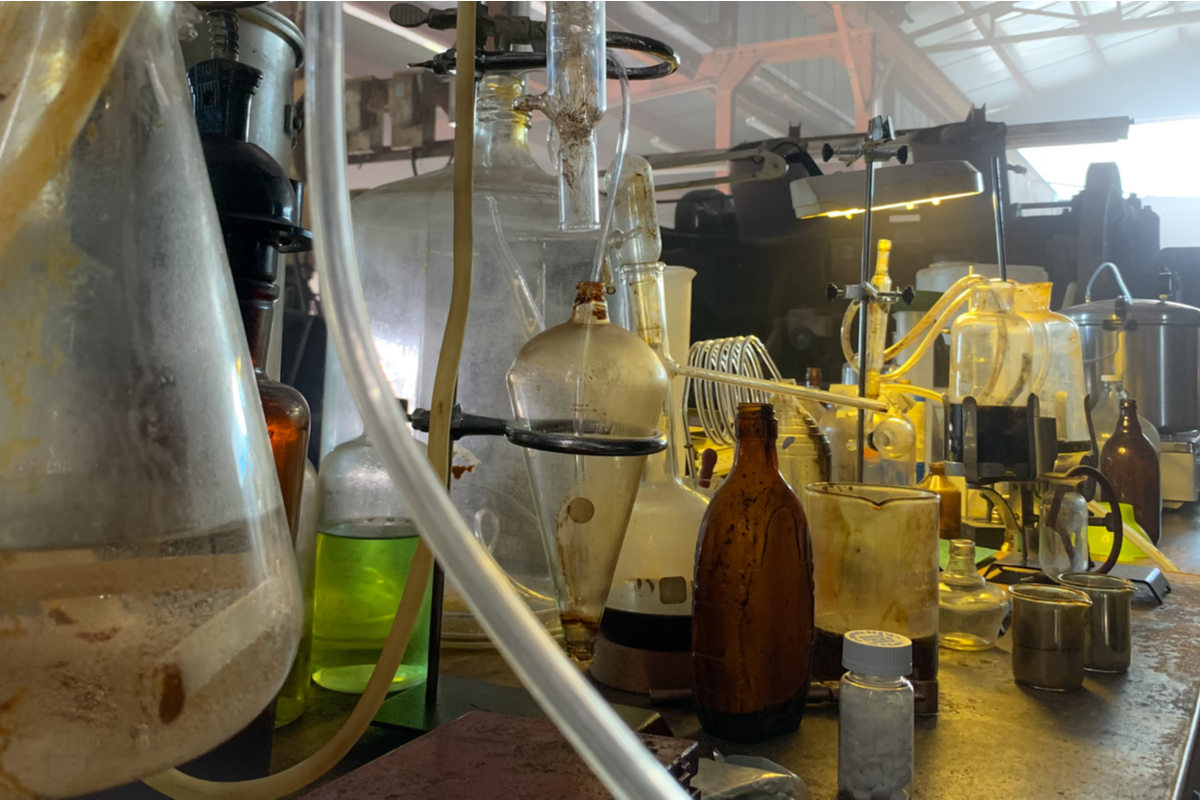The Dangers of Cleaning Up Biohazardous Materials Without The Proper Tools
There are a number of precautions to consider when in a situation with biohazardous materials. These materials include any type of waste, whether it be liquid spills or other matter, that can cause bodily harm to humans and even animals. This can include a number of things such as bodily fluids (including blood), deceased biological specimens, animal waste, airborne toxic chemicals, spills of unknown substances, etc.
When in a situation where you come into contact with potentially biohazardous materials, there are a number of requirements to protect yourself from inhalation or close, physical contact with toxins. For example, cleaning of these environments can be done safely with the proper knowledge of identifying what materials are, keeping yourself safe, and disposing of them properly.
Prevent Inhalation of Airborne Toxins
When in contact with cleaning a hazardous environment where it has been identified that airborne toxic chemicals are present, which is usually done through testing by professionals in the field, it is necessary to protect yourself against them.
Inhalation of toxic chemicals from contaminated areas can cause severe respiratory illnesses. For example, hazardous materials can be present in a home as most chemicals will cling to walls, floors, ceilings, etc. You can identify the presence of some toxins by smell or ware on materials. It’s similar to walls and ceilings looking yellow-stained from smokers. This can also be true for drug houses – meth smoking in a home will leave traces of chemicals behind. Airborne toxins can go as far as impacting vents and sewer systems.
It’s very important to wear protective equipment around the face. To prevent inhalation, wearing a high-grade mask over the mouth and nose will stop the permeation of hazardous airborne chemicals. Even better, use a ventilated mask that covers the whole head that still allows proper airflow. Your eyes also need to be protected against toxic chemicals, because contact with the eyes can cause irritation and long-term effects depending on the level of toxicity.
Contact with Corrosive & Toxic Materials
There can be situations where you are cleaning up a spill of liquid or solid waste that can include biohazards. In these situations, it is important to keep your hands protected.
When handling toxic materials like sharp objects that could penetrate the skin or corrosive materials that could burn and damage your skin, it is important to have the proper protection. Being penetrated by an unknown sharp object from not wearing gloves when handling objects can cause contaminations by things like HIV, Hepatitis, Tetanus, or other blood infections.

Touching unknown waste without wearing gloves or covering any exposed skin from head-to-toe using protective gowns, can result in spilling toxic chemicals on your skin. This can result in burns, skin infections, blood infections from skin absorption, and more. You can easily spill something being carried on your hands, arms, legs, or feet if you aren’t using proper methods of disposal. This refers to using biohazard-safe bags or containers meant to dispose of these types of materials.
Potential of Explosives
It is also very important to be trained on what chemicals or types of waste might become dangerous if they come into contact with one another. For example, when disposing of biohazardous materials, it is important to know which waste gets disposed of where, and which waste cannot be mixed.
There is the potential for increasing dangers to yourself and others through chemical combustion, which can also be a fire hazard. This is where training on recognizing smell or appearance becomes important, in addition to training around proper disposal methods. The potential of explosives is obviously very detrimental to the property and increases the likelihood of contaminating surrounding areas.
Disinfection and Disposal of Physical Property
Another very important factor to remember when ensuring proper training and equipment is available to those in contact with biohazardous environments, is properly disinfecting the area after disposal of waste. There should be proper protocols to follow to ensure the area is safe to reenter without the dangers of being affected by lingering toxins.
The proper equipment is very important in this aspect of cleaning up biohazardous waste. Generally, the reason for being in contact with waste or a scene that has been exposed to biohazards is to clean it up – removing the harmful chemicals, waste, and toxins to ensure a safe and stable environment. There is, however, the possibility of contact with dangerous materials. So, it is important to be well-trained and well-informed of proper disinfection and disposal techniques.
There are many, many steps involved in disinfecting and disposing of biohazardous wastes from a scene or property. In cases where the area was the scene of a drug house or operation, usually, law enforcement will visit the scene first. When this occurs, evidence is usually collected (safely) and some clean-up may have already taken place. In other cases where it was a hoarding situation where dead animals and animal feces were present, a cleaning crew may enter the area first as it usually does not involve other parties. After other protocols have been followed, it is important to be protected not only against waste but also against any possible dangers around improperly handling disinfecting tools and chemicals.
 It can be really dangerous to use the wrong cleaning products in the wrong situations. There is necessary training involved in understanding not only how to clean and dispose of waste, but which equipment should be used. This can involve understanding what protective equipment needs to be worn – maybe it differs from what you wear to protect against airborne toxins. Or, using the proper tools to ensure full disinfection of areas. As you can probably guess, as the same is generally true for regular, everyday household cleaning products, there are specific chemicals used to clean specific biohazards. It is especially important with biohazardous waste, as the level of toxicity is usually high, so proper equipment is vital. Using incorrect cleaning products can result in fires, increasing airborne chemicals, and more danger to anyone present.
It can be really dangerous to use the wrong cleaning products in the wrong situations. There is necessary training involved in understanding not only how to clean and dispose of waste, but which equipment should be used. This can involve understanding what protective equipment needs to be worn – maybe it differs from what you wear to protect against airborne toxins. Or, using the proper tools to ensure full disinfection of areas. As you can probably guess, as the same is generally true for regular, everyday household cleaning products, there are specific chemicals used to clean specific biohazards. It is especially important with biohazardous waste, as the level of toxicity is usually high, so proper equipment is vital. Using incorrect cleaning products can result in fires, increasing airborne chemicals, and more danger to anyone present.
Conclusion: Importance of Safety and Training
From what has been outlined so far, it is safe to say there are many reasons to ensure proper training is conducted for any staff person who is going to be in contact with biohazardous waste. It is also very important for these people to be fully protected from their mouth and nose being covered to prevent airborne intoxication or illness, hair being covered to avoid lingering odors and toxins, skin on face and body protected against corrosive waste, and keeping feet and hands properly covered to avoid penetration of infectious materials.
Whether it be a situation where there are dead animals and fecal matter present, or walls, floors, and ceilings are absorbing toxic fumes, it is necessary to ensure the safety of those disinfecting and disposing of the materials and those who will be in contact with the environment. This is important work that keeps everyday people safe and keeps them from trying to clean areas of waste they may not know is toxic or a biohazard. These people who are properly trained are knowledgeable in guaranteeing ongoing safety. They should be trained to identify what toxins, chemicals, and biohazards are present and be able to efficiently remove them. This training includes keeping themselves safe and protected, so the hazards can be safely disposed of.
Any missteps in this line of work can be very dangerous. There is room for error that must be entirely avoided by those who are being placed in these situations, i.e. through employment with biohazard clean-up companies. These cleaning processes involve many steps and protocols put in place by individuals across many areas of expertise who are very knowledgeable across all required areas. These processes have been in place for years, only becoming enhanced as the years go on and technology grows. But, the safety of people is of utmost importance.
There are many reasons that these biohazard scenes exist, whether it be the scene of a former drug operation, an elderly person who has become incapable of being able to care for themselves, or a property that is abandoned, it is very beneficial when they are identified and then a crew can be sent in to properly clean the area to ensure not only the disinfection of the property itself and the future inhabitants but also the disinfection of the surrounding area. It is about keeping the people and environments safe. It involves full and proper training, the availability of the right resources (i.e. personal protective equipment), and fully capable individuals coined with those tasks. The above-mentioned potential scenarios for danger should be considered when interacting with various biohazardous materials in a scene, for whatever reason. Like any other type of employment, being unaware of your surroundings or being unsafe while working can be very dangerous to yourself and others. Follow proper procedures, protocols and refer to training materials, especially when your personal safety is involved.

